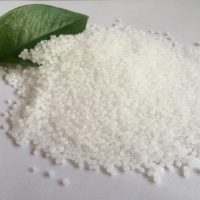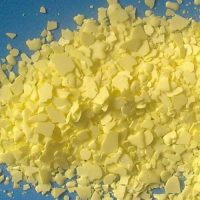Iranian Goods Export & Supply
Negotiation with foreign companies to order, coordination and delivery of goods. Supply of Iranian goods for distribution companies all around the world.
Urea or Carbamide
Urea or carbamide is an organic compound with the chemical formula CO(NH2)2. The molecule has two —NH2 groups joined by a carbonyl (C=O) functional group. Urea serves an important role in the metabolism of nitrogen-containing compounds by animals and is the main nitrogen-containing substance in the urine of mammals. It is solid, colorless, and odorless (although the ammonia that it gives off in the presence of water, including water vapor in the air, has a strong odor). It is highly soluble in water and practically non-toxic (LD50 is 15 g/kg for rat). Dissolved in water, it is neither acidic nor alkaline. The body uses it in many processes, the most notable one being nitrogen excretion. Urea is widely used in fertilizers as a convenient source of nitrogen. Urea is also an important raw material for the chemical industry.
Sulfur
In nature, sulfur can be found as the pure element and as sulfide and sulfate minerals. Elemental sulfur crystals are commonly sought after by mineral collectors for their brightly colored polyhedron shapes. Today’s sulfur production is as a side product of other industrial processes such as oil refining; in these processes, sulfur often occurs as undesired or detrimental compounds that are extracted and converted to elemental sulfur. As a mineral, native sulfur under salt domes is thought to be a fossil mineral resource, produced by the action of ancient bacteria on sulfate deposits.
Sulfur is increasingly used as a component of fertilizers. The most important form of sulfur for fertilizer is the mineral calcium sulfate. Elemental sulfur is hydrophobic (that is, it is not soluble in water) and, therefore, cannot be directly utilized by plants. Over time, soil bacteria can convert it to soluble derivatives, which can then be utilized by plants. Sulfur improves the use efficiency of other essential plant nutrients, particularly nitrogen and phosphorus.
Procurement and supply of sulfur is carried out in the forms of refinery bulk sulfur, powder or granules, lump, micronized sulfur, bentonite bearing sulfur and organic sulfur. Sulfur exports from the Iranian South Pars gas field with more than 650 percent of its value in international markets, patented the record of $ 707. India, Pakistan and China are numbered among the most important buyers of Iranian sulfur and they take the delivery of sulfur form Bandar Abbas port.
Iranian Caviar
Caviar, sometimes called black caviar, is a luxury delicacy, consisting of processed, salted, non-fertilized sturgeon roe. According to the Code Alimentaire of United Nations’ Food and Agriculture Organization, FAO, § 68 appendix V, caviar is defined as “the product made from fish-eggs of the Acipenseridae family by treating with food-grade salt”. “Fish eggs” is defined as “non-ovulated eggs separated from the connective tissue of the ovaries” or “ovulated eggs from aquaculture sturgeons”. Caviar is commercially marketed worldwide as a delicacy and is eaten as a garnish or a spread; for example, with hors d’œuvres. It is also considered by some to be a condiment and can be used in place of salt or seasonings.
Caviar is simply sieved and lightly salted Sturgeon roe. The four main types of caviar are Beluga, Sterlet, Ossetra, and Sevruga. The rarest and costliest is from the beluga sturgeon that swims in the Caspian Sea, which is bordered by Iran, Kazakhstan, Russia, Turkmenistan and Azerbaijan. Wild caviar production has now survived only in Azerbaijan and Iran as Russia maintains a self-imposed ban on caviar trade from wild sturgeon. Commercial caviar production historically involved stunning the fish (usually by clubbing its head) and extracting the ovaries.
Iranian Karaburun Ossetra caviar is a variety of Iranian Ossetra caviar which boasts a nutty, creamy roe. The flavor can only be described as a perfect balance of salt and butter undertones. The texture is silky yet separate eggs hold together well in a mass. Karaburun refers to the particular sturgeon (acipenser persicus) which is native to the southern Caspian Sea, and is mainly processed by Iranian fisheries. Karaburun caviar is distinct in that it is one of the only remaining wild sturgeons that is not considered an endangered species because of the efforts put forth by the Iranian Ministry of Fisheries.
Dried Fruits and Nuts
Pistachio
Pistacia vera in the Anacardiaceae family, is a small tree originally from Persia (Iran). Pistachio is one of the principal traditional export products of Iran and since ancient times has always occupied special position in the foreign trade of the country. Thumbing back through the pages of history, we can observe that pistachio tree have existed since thousands of years ago but were so rare that only the royal and rich families could possess some. Today the finest pistachio is native to Iran. In Kerman province especially, the region surrounding Rafsanjan city, more than 160000 hectares of land are under pistachio cultivation and about 95% of the pistachio of the country is produced here. The ideal climate conditions of this area, with abundance of sun shine and perfect soil for growth of pistachio trees, give the pistachio the most natural taste and flavor that no other type of pistachio can equal. It is a natural snack for health-conscious individuals; Iranian pistachio constitutes an ideal ingredient in the preparation of a variety of dishes and sweets and is served during party receptions and family gatherings. Pistachio has the highest protein content and nutritional value. It contains a high percentage of potassium, phosphorous, calcium and all the essential amino acids. It is believed that the consumption of pistachio reduces the risk of heart attack and death from diseases.
The pistachio kernels are often eaten whole, either fresh or roasted and salted, and are also used in ice cream, pistachio butter, pistachio paste] and confections such as baklava, pistachio chocolate, pistachio halva or biscotti and cold cuts such as mortadella. Americans make pistachio salad, which includes fresh pistachios or pistachio pudding, whipped cream, canned fruit and sometimes cottage cheese. In July 2003, the Food and Drug Administration (FDA) approved the first qualified health claim specific to nuts lowering the risk of heart disease: “Scientific evidence suggests but does not prove that eating 1.5 ounces (42.5g) per day of most nuts, such as pistachios, as part of a diet low in saturated fat and cholesterol may reduce the risk of heart disease.
 Walnut Kernels
Walnut Kernels
The Persian Walnut ,also known as Common Walnut or English Walnut, is a species of walnut that is native from the Balkans, in southeast Europe, east through southwest and central Asia and the Himalayas to southwest China. The largest forests are in Kyrgyzstan, where Persian Walnut trees occur in extensive, nearly pure walnut forests at 1,000-2,000 m altitude – notably at Arslanbob in Jalal-Abad Province. Persian Walnut is a large deciduous tree attaining heights of 25-35 m, and a trunk up to 2 m diameter, commonly with a short trunk and broad crown, though taller and narrower in dense forest competition.
Iranian Fruits & Citrus
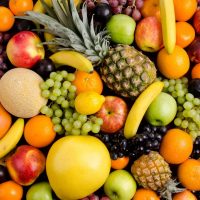 As for the Iranian fresh fruits with the export capabilities, we can mention pomegranate, apple, varieties of citrus such as orange, lemon, tangerine and grape, etc.
As for the Iranian fresh fruits with the export capabilities, we can mention pomegranate, apple, varieties of citrus such as orange, lemon, tangerine and grape, etc.
Apple: Iranian apples have a rounded shape with a depression at the top where the stem is attached. Some apples are almost perfectly round, while others are more rounded at the top and narrower at the bottom. In addition, some have knobby lobes at the calyx end (bottom) of the fruit. Apple fruits are firm and the skin is shiny and smooth. The color of the skin can be red, green, yellow, or a combination of those colors. The flesh is white, red or ivory. Which City or Province Grow: Shemiran + Mashad + Oroumeiyeh. Harvest Season: Summer + winter
Orange: Iranian Oranges are oval to sphere-shaped fruits with leathery, porous skin. Their color ranges from orange to red-orange. Oranges may be confused with other citrus fruits, such as grapefruits and tangerines. However, grapefruits are usually much larger and more yellow than oranges, and tangerines have a more flattened sphere shape than oranges. Which City or Province Grow: North of Iran + Jiroft + Bandar Abbas. Harvest Season: Winter.
Strawberry: Iranian Strawberry fruits are aggregates made up of several small fruits, each with one seed called an achene. The flesh of the strawberry is actually an enlarged receptacle, non-reproductive material. Which City or Province Grow: Kordestan. Harvest Season: Summer.
Pomegranate: Iranian Pomegranates are 7.5 to 10 CM in diameter and round to oblong in shape. The skin is leathery in texture and orange to orange-red in color. The edible portion of the fruit is the juicy red flesh and there are many seeds inside the fruit making it difficult to eat. Which City or Province Grow: Yazd + Saveh + Esfahan + Fars. Harvest Season: Fall + winter.
Iranian Saffron
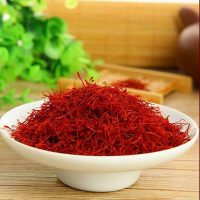 Saffron is a spice derived from the flower of Crocus sativus, commonly known as the saffron crocus. Crocus is a genus in the family Iridaceae. Each saffron crocus grows to 20–30 cm (8–12 in) and bears up to four flowers, each with three vivid crimson stigmas, which are each the distal end of a carpel. Together with the styles, or stalks that connect the stigmas to their host plant, the dried stigmas are used mainly in various cuisines as a seasoning and coloring agent. Saffron, long among the world’s most costly spices by weight, is native to Southwest Asia including Iran and was first cultivated in Greece. Almost all saffron grows in a belt bounded by the Mediterranean in the west and the rugged region encompassing Iran and Kashmir in the east. The other continents, except Antarctica, produce smaller amounts. Some 300 t (300,000 kg) of dried whole threads and powder are gleaned yearly, of which 50 t (50,000 kg) is top-grade “coupe” saffron. Iran answers for around 90–93% of global production and exports much of it. A few of Iran’s drier eastern and southeastern provinces, including Fars, Kerman, and those in the Khorasan region, glean the bulk of modern global production.
Saffron is a spice derived from the flower of Crocus sativus, commonly known as the saffron crocus. Crocus is a genus in the family Iridaceae. Each saffron crocus grows to 20–30 cm (8–12 in) and bears up to four flowers, each with three vivid crimson stigmas, which are each the distal end of a carpel. Together with the styles, or stalks that connect the stigmas to their host plant, the dried stigmas are used mainly in various cuisines as a seasoning and coloring agent. Saffron, long among the world’s most costly spices by weight, is native to Southwest Asia including Iran and was first cultivated in Greece. Almost all saffron grows in a belt bounded by the Mediterranean in the west and the rugged region encompassing Iran and Kashmir in the east. The other continents, except Antarctica, produce smaller amounts. Some 300 t (300,000 kg) of dried whole threads and powder are gleaned yearly, of which 50 t (50,000 kg) is top-grade “coupe” saffron. Iran answers for around 90–93% of global production and exports much of it. A few of Iran’s drier eastern and southeastern provinces, including Fars, Kerman, and those in the Khorasan region, glean the bulk of modern global production.
Herbal Extracts
 Chicory Extract: Effective for hepatic and nephric illness, Reduce fever, Purifies blood and helps having a healthy skin, cold nature.
Chicory Extract: Effective for hepatic and nephric illness, Reduce fever, Purifies blood and helps having a healthy skin, cold nature.
Dill Extract: Sooths stomach, Helps to expel intestinal gas, good for reducing hyper blood pressure and hyper blood cholesterol, Dry warm nature.
Orange Flower Extract: Relieves heart and nerves, Helps you sleep and relax body, Anti hiccups, Mild warm nature.
Spearmint Extract: Relieves stomach pain and good for ulcers and gastric, Anti diarrhea and Anti vomiting, disinfect digestive system, Warm nature.
Willow plant Extract: Good for heart invigoration and gastric, tranquilizer, Cold nature.
Rose Water is the hydrosol portion of the distillate of rose petals. Rose water, itself a by-product of the production of rose oil for use in perfume, is used to flavor food, as a component in some cosmetic and medical preparations, and for religious purposes throughout Europe and Asia. Rose syrup is made from rose water, with sugar added.
Rose Oil is the essential oil extracted from the petals of various types of rose. Rose ottos are extracted through steam distillation, while rose absolutes are obtained through solvent extraction or supercritical carbon dioxide extraction, with the absolute being used more commonly in perfumery. Even with their high price and the advent of organic synthesis, rose oils are still perhaps the most widely used essential oil in perfumery.
Bitumen
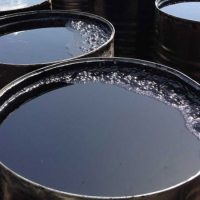 Bitumen is the sticky, black and highly viscous liquid or semi-solid present in most crude petroleum and in some natural deposits; it is a substance classed as a pitch. Until the 20th century, the term asphaltum was also used.
Bitumen is the sticky, black and highly viscous liquid or semi-solid present in most crude petroleum and in some natural deposits; it is a substance classed as a pitch. Until the 20th century, the term asphaltum was also used.
Asphalt or bitumen can sometimes be confused with “tar”, which is a similar black, thermoplastic material produced by the destructive distillation of coal. During the early and mid-20th century when town gas was produced, tar was a readily available product and extensively used as the binder for road aggregates. The addition of tar to macadam roads led to the word tarmac, which is now used in common parlance to refer to road-making materials.
In 2010, Iran’s bitumen production amounted to 3,399,000 tons which in this quantity 2,048,000 tons of bitumen was produced by Pasargad Oil Company and 350,000 tons were produced by Jay oil refining co.
Pakistan, India, China, Germany, South Africa, Armenia, Afghanistan, U.A.E, Georgia, Azerbaijan, Turkmenistan, Turkey, Iraq, Tunisia, Romania and Vietnam have been numbered among the exporting markets of Iranian bitumen industry so far.
Fertilizers
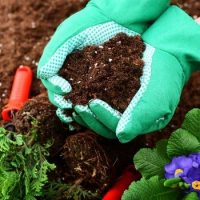 Fertilizer (or fertiliser) is any organic or inorganic material of natural or synthetic origin (other than liming materials) that is added to a soil to supply one or more plant nutrients essential to the growth of plants.
Fertilizer (or fertiliser) is any organic or inorganic material of natural or synthetic origin (other than liming materials) that is added to a soil to supply one or more plant nutrients essential to the growth of plants.
Inorganic fertilizer use has also significantly supported global population growth — it has been estimated that almost half the people on the Earth are currently fed as a result of synthetic nitrogen fertilizer use.
Fertilizers come in various forms. The most typical form is solid fertilizer in granulated or powdered. The next most common form is liquid fertilizer; some advantages of liquid fertilizer are its immediate effect and wide coverage. There are also slow-release fertilizers (various forms including fertilizer spikes, tabs, etc.) which reduce the problem of “burning” the plants due to excess nitrogen. Polymer coating of fertilizer ingredients gives tablets and spikes a ‘true time-release’ or ‘staged nutrient release’ (SNR) of fertilizer nutrients. More recently, organic fertilizer is on the rise as people are resorting to environmental friendly (or ‘green’) products. Although organic fertilizer usually contains fewer nutrients, some people still prefer organic due to natural ingredient. Iran can export varieties of organic fertilizers and chemical fertilizers are numbered among varieties of by- products of Iranian refineries with the possibility of export.
Iron Ore
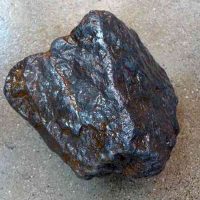 Considering the general policies of the Islamic Republic of Iran to withdraw from the uni-polarity system of national income, export of non-petroleum goods has been put as the top priority. At this time, due to the excess Iron ore fines & the necessity to create industrial infrastructure, industries beside mining & preparation of essential financial sources, export of minerals is a temporary work plan for Iran Minerals Production & Supplies Companies.
Considering the general policies of the Islamic Republic of Iran to withdraw from the uni-polarity system of national income, export of non-petroleum goods has been put as the top priority. At this time, due to the excess Iron ore fines & the necessity to create industrial infrastructure, industries beside mining & preparation of essential financial sources, export of minerals is a temporary work plan for Iran Minerals Production & Supplies Companies.
The Islamic Republic of Iran is rich in mining reserves specially Iron ore & well known among the other countries of the world. In Iran several Iron masses have been identified among which only some of the Iron Bodies have been studied & due to the closeness of such iron bodies the masses are classified in following regions:
- Arad region – Malayer
- Bafgh region – Yazd
- Esfahan region – Kashan
- Khorasan region
- Tehran region – Qom – Qazvin
- Persian Gulf region
Chrome Ore
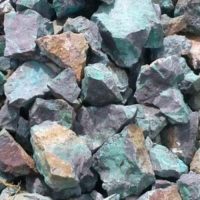 Chromite is an iron chromium oxide: FeCr2O4. It is an oxide mineral belonging to the spinel group. Magnesium can substitute for iron in variable amounts as it forms a solid solution with magnesiochromite (MgCr2O4); substitution of aluminum occurs leading to hercynite (FeAl2O4). Chromite is found in peridotite from the Earth’s mantle. It also occurs in layered ultramafic intrusive rocks. The only ores of chromium are the minerals chromite and magnesiochromite. Most of the time, economic geology names chromite the whole chromite-magnesiochromite series: FeCr2O4, (Fe,Mg)Cr2O4, (Mg,Fe)Cr2O4 and MgCr2O4. The two main products of chromite refining are ferrochromium and metallic chromium, for those products the ore smelter process differs considerably. For the production of ferrochromium the chromite ore (FeCr2O4) is reduced with either aluminium or silicon in a aluminothermic reaction and for the production of pure chromium the iron has to be separated from the chromium in a two step roasting and leaching process. Chromite is also used as a refractory material, because it has high heat stability. Iran is also rich in mining reserves of chrome ore or other ores such as copper ore, etc.
Chromite is an iron chromium oxide: FeCr2O4. It is an oxide mineral belonging to the spinel group. Magnesium can substitute for iron in variable amounts as it forms a solid solution with magnesiochromite (MgCr2O4); substitution of aluminum occurs leading to hercynite (FeAl2O4). Chromite is found in peridotite from the Earth’s mantle. It also occurs in layered ultramafic intrusive rocks. The only ores of chromium are the minerals chromite and magnesiochromite. Most of the time, economic geology names chromite the whole chromite-magnesiochromite series: FeCr2O4, (Fe,Mg)Cr2O4, (Mg,Fe)Cr2O4 and MgCr2O4. The two main products of chromite refining are ferrochromium and metallic chromium, for those products the ore smelter process differs considerably. For the production of ferrochromium the chromite ore (FeCr2O4) is reduced with either aluminium or silicon in a aluminothermic reaction and for the production of pure chromium the iron has to be separated from the chromium in a two step roasting and leaching process. Chromite is also used as a refractory material, because it has high heat stability. Iran is also rich in mining reserves of chrome ore or other ores such as copper ore, etc.
